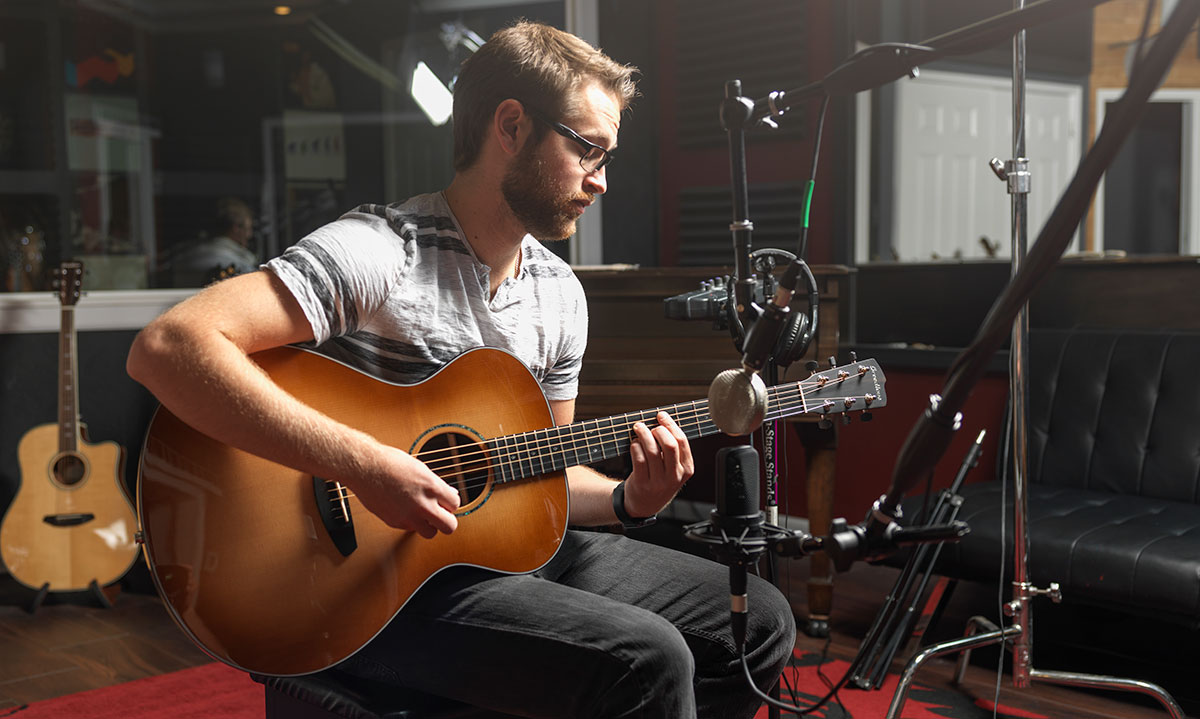
 The Breedlove Difference—sound!
The Breedlove Difference—sound!
Instruments, to one degree or another, have native keys. Banjos like G, for example. Fiddles are keen on A and D. And bagpipes, well they do dig their Bb, don’t they?
Guitars like E. That’s why the blues sound so good.
An E chord lets that lowest standard-tuning note hum, like a rumble, beneath everything else. The third of the triad only clicks once, in the middle, so it’s all big fifths and tonics. Depending on what follows, the E major chord, with that rich bottom end, can be dark or sweet.
The great punk poetess Patti Smith once proclaimed, “Sometimes I feel like I've broken through and I'm free and I could dig into eternity riding the wave and realm of the E.”
So do it. Grab a USA made Breedlove. Grab an Oregon myrtlewood Concerto, say, drop it on your knee and hit an E chord.
What happens?
Everything. Everything happens. All at once.
That E chord blooms and thunders and hangs in the air. The back of the instrument pushes against your belly with a beautiful recoil as the sound spreads out from the top, which is pulsing and pumping like an organ, the sustain of the fundamental tickling up against a cascading series of overtones.
It’s sonic joy and all you’ve done is play an E chord. Think of the possibilities if you follow with a B!
By now you know about the science behind Sound Optimization at Breedlove, the way the Hertz readings for each individual sustainably-harvested piece of wood are measured, matched and put to use in specific pairings; the way each element is sanded to weight, rather than thickness, for maximum musical efficiency; the way each instrument is carefully tuned, through hand voicing to a specific fundamental frequency.
Those numbers are nice, and the wood shavings smell great, but once the guitar is actually in your hands they don’t mean much, at least in the heat of the moment—at a gig, at a jam, or singing a love song to your darling.
What matters then is sound, and that, really, is what Sound Optimization is about. It’s even the name of the process!
The glorious voice of your favorite Breedlove is the result of that special Sound Optimization recipe— the Tonewood Certification Project; understanding variability in wood; optimizing the potential in tonewoods; and Breedlove proprietary body shapes, which include unique soundhole dimensions.
“The reason for that,” says Breedlove owner Tom Bedell, “is that as we were dialing in to get the right air chamber size and the right look and comfort for our guitars, we would also target a certain fundamental frequency that we wanted to hit for that particular body shape. By changing the sound hole, it moves the fundamental frequency, because it changes the amount of wood that's pushing the air in the body.”
“The instruments are more connected and responsive,” says Dakota Farrstrom—one of the sound quality assurance maestros in Bend—of the new optimized Breedloves. “The entire guitar is vibrating now, top to bottom, front to back, with each part interacting collaboratively, minimizing any sonic conflict or unfavorable tonal qualities.”
As we’ll soon explore further, the distinctive Breedlove body shapes each have individual properties that can be further shaped by wood choices and by that careful tuning of each body to its chosen fundamental.
“Before Sound Optimization, you had to compromise between volume and projection, or overtones and complexity. We’ve worked really hard at giving you both of those,” says Bedell.
The Breedlove Difference is discovered when pick hits string, or when your fingers deftly make a chord jump to life. Whether you’re a weekend basher or a delicate fingerstylist, there is a Breedlove that has been Sound Optimized to fit your style and the unique demands of your music.
Breedlove Production Manager Miles Benefield has watched over the Sound Optimization process from its earliest implementation in Bend, seeing—and hearing—first hand how it has transformed Breedlove USA guitars.
“With the top and back paired by voicing,” he says, “the instrument is working in a way that makes it feel alive in your hands. As Dakota points out, it’s all connected. Never before have luthiers been able to apply this science so directly to instruments, and then put those guitars in players hands and watch the reactions.”
The aforementioned myrtlewood Concerto is arresting in its presence, the specific notes of each chord blending, but singing through. An alternating thumb bass line never gets lost, but neither overpowers. And single note lines speak with authority.
“Based on our raw wood top allocation, you can really feel the top respond specifically to the play style it was designed for,” says Benefield. “I’ve found that the instruments sound a lot more balanced. The treble really shines. The bass is pronounced, but not muddy or overpowering. And the mids fit perfectly between the two.”
“Sound Optimization is not a gimmick,” he laughs, “it’s the truth!”
